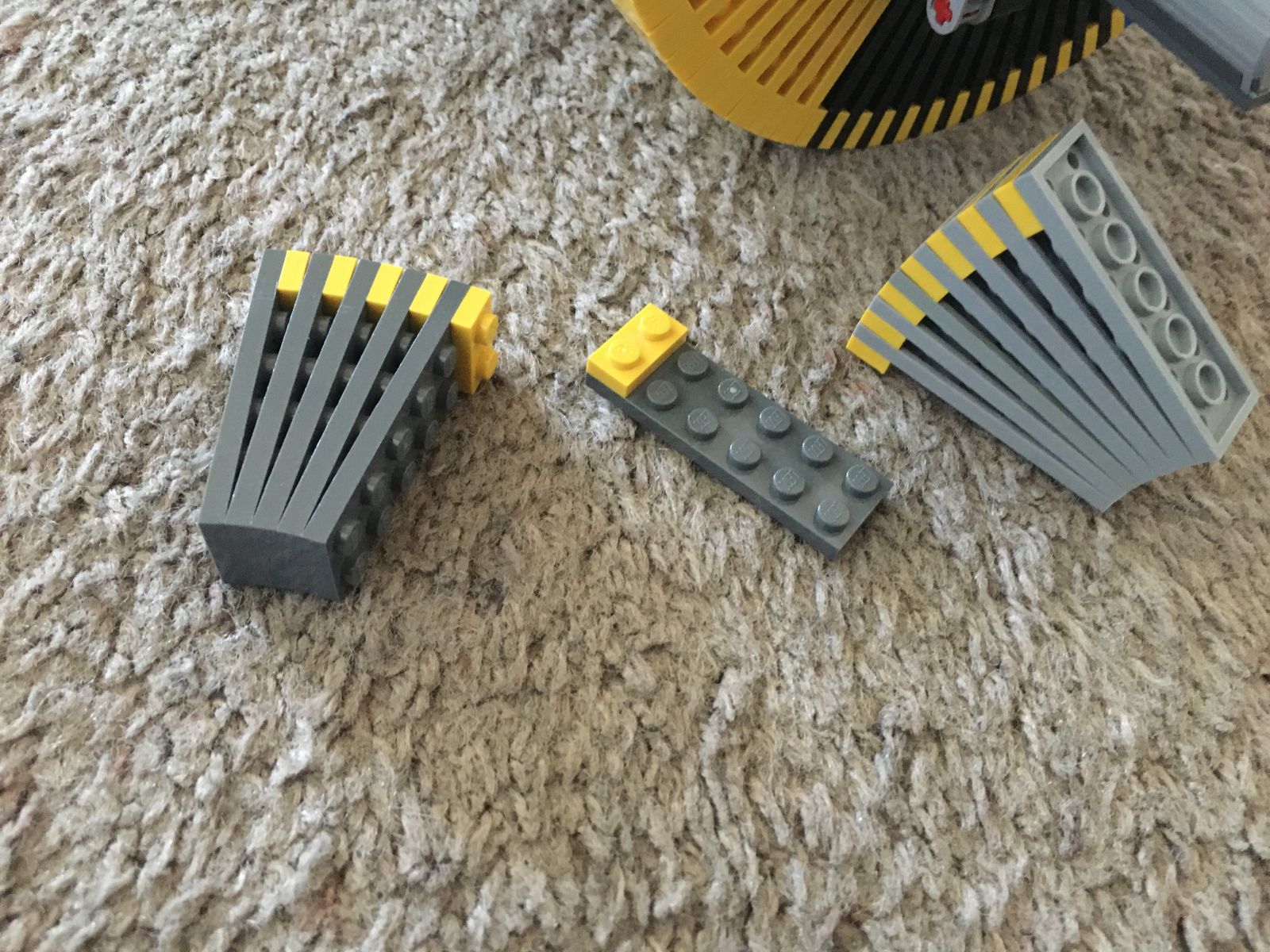

So... A while ago, I was messing around with the so-called “illegal” Lego building technique of attaching plates partway and using a smaller plate to prop up one end, giving you a slope. I started connecting more and more of these modules together until I’d created a full ring. These rings of Lego plates are larger than any tire that’s come out of an official Lego set, so naturally I decided I had to figure out a way to use them in a motorized vehicle. I decided to build a two-wheeled vehicle with them, because it seemed like a fun idea, and it’s a bit difficult to do with normal Lego wheels.
For my first prototype, I tried to mount the rings of Lego plates on large, circular pieces with rubber bracelets wrapped around them. This was durable enough for a few minutes of driving, but would self-destruct or go crooked after a while. I also found that with the motors driving the wheels directly, there was so much torque that the body of the vehicle would just flip around within the diameter of the wheels and go nowhere. Gearing it up to reduce torque put too much strain on the motors, and gearing it down wasn’t helping either, so I ended up instead mounting the wheels on friction pins, which solved the problem but created a new one as well: the vehicle was now dang-near uncontrollable. It was anyone’s guess which way it would go, and steering was just plain chaotic.
It was clear that I was going to have to re-think things. After much experimentation, I decided to ditch the center sections I had made for the wheels in favor of a much more complicated but hopefully better (and arguably cooler) design: I went hubless. Now, the rings of Lego plates are mounted within a track of technic parts, with smaller Lego wheels keeping them in place. The rings are driven by a small tire at the bottom which is pressed against the inside of the ring via gravity. I think has proved to be the best compromise. This way, it’s basically direct drive up until the vehicle’s midsection rotates to about 45 degrees or so, at which point the tires driving the rings lose traction. Primitive traction control!
Now it’s easy to control, still fast enough to be fun, and to me, a more interesting machine. Therefore, I shall call it a success :)